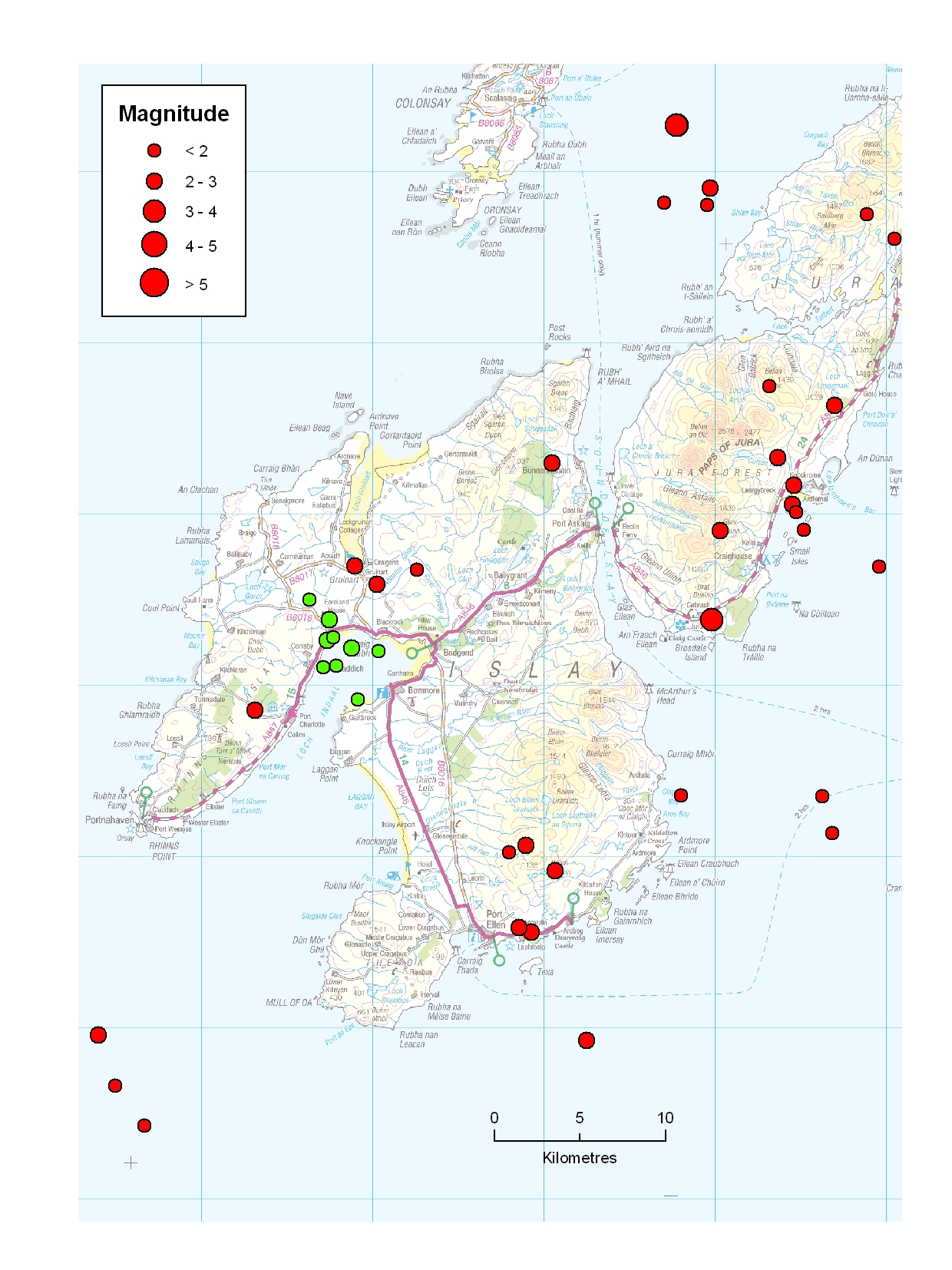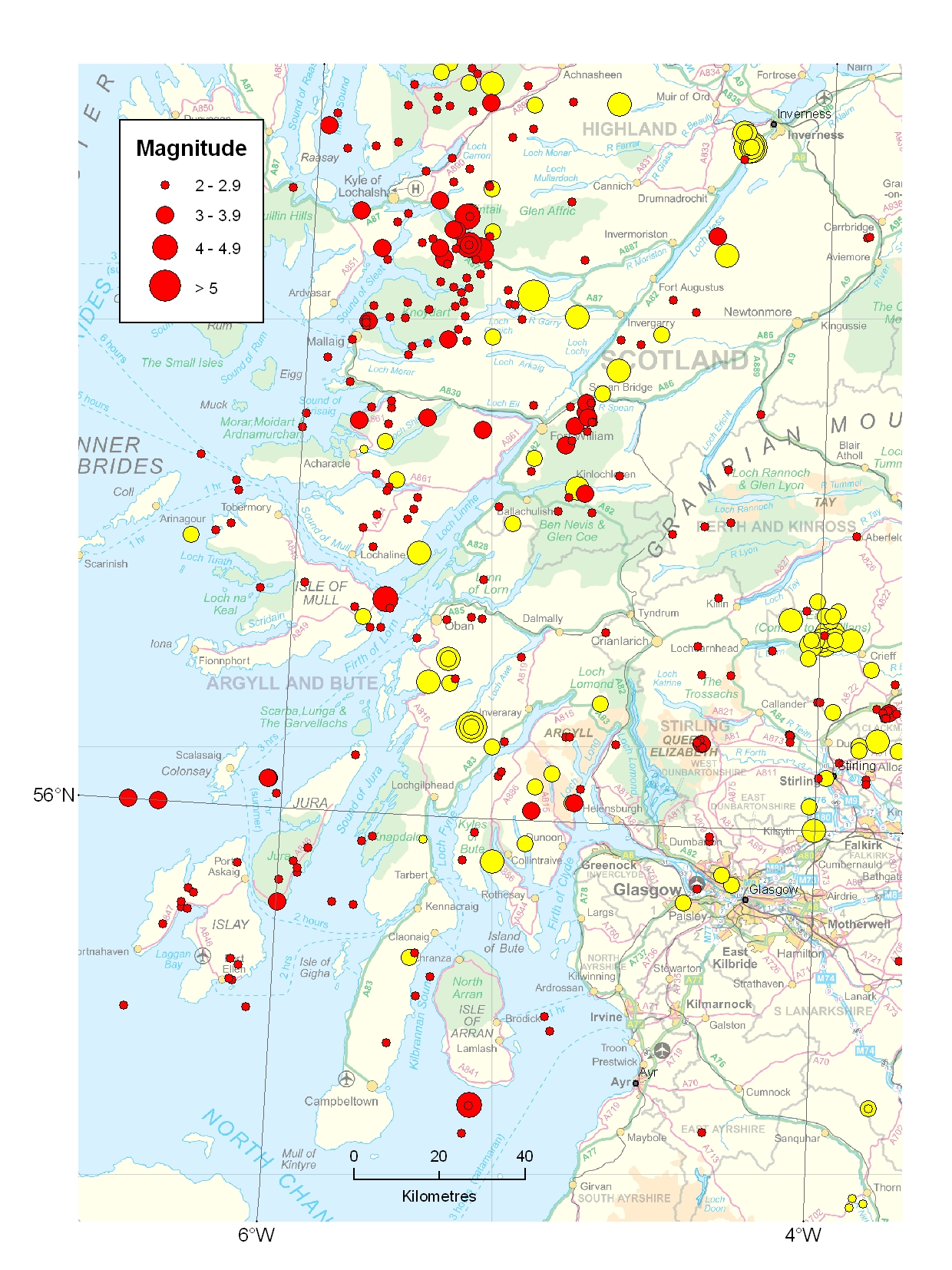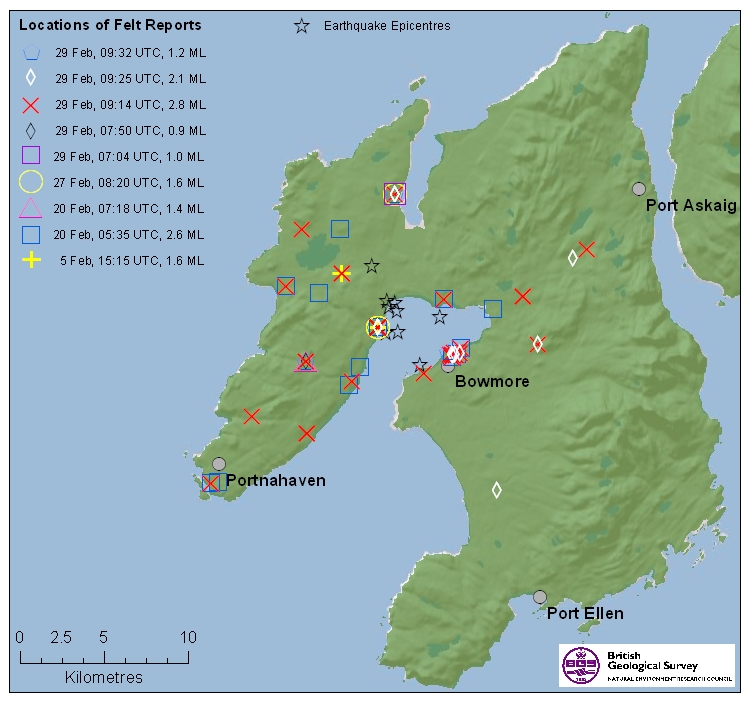Islay Earthquakes February 2012
Since the beginning of February, a sequence of at least nine small earthquakes has struck the island of Islay on the west coast of Scotland. The largest of the earthquakes had a magnitude of 2.8 ML, while two others had magnitudes in excess of 2.0 ML. Eight of the earthquakes were felt by local residents who reported that " the house trembled from side to side", the "tin sheeted roof shook" and that it felt like " a very large heavy track moving vehicle".
Such earthquake sequences can occur in two ways. Firstly, moderate to large size earthquakes are usually followed by aftershocks, which occur due to readjustment to a new state of stress. The pattern of the aftershock sequence depends on the size of the event and the local tectonic setting. Normally, the largest aftershock is about one magnitude unit smaller than the main shock. For example, the magnitude 5.4 ML Lleyn Peninsula earthquake that occurred in North Wales in 1984 was followed by some hundreds of aftershocks in the subsequent months, the largest of which was a magnitude 4.3 ML earthquake that occurred one month later.
Secondly, earthquake swarms are sequences of earthquakes clustered in time and space without a clear distinction of main shock and aftershocks. Such earthquake sequences or swarms are relatively common in Great Britain, examples include Comrie (1788-1801, 1839-46), Glenalmond (1970-72), Kintail (1974), Doune (1997), Blackford (1997-98, 2000-01), Constantine (1981, 1986, 1992-4), Johnstonebridge (mid 1980s), Dumfries (1991, 1999), Manchester (2002) and Aberfoyle (2003). The largest event in the Comrie sequence was a magnitude 4.8 ML event in 1839. The magnitudes of these historic events are determined from macroseismic observations and are calibrated against the instrumental local magnitude scale (Musson, 1996). The largest event in the Kintail earthquake swarm in 1974/1975 had a magnitude of 4.4 ML.
By comparison, the Islay earthquakes of February 2012 are relatively small, and no damage would be expected from events of this size. Seismic activity in and around Islay is relatively low, although a number of magnitude 3+ events have occurred in recent times including a magnitude 3.4 earthquake off Jura in 1998. However, larger events have occurred elsewhere in Argyll in recent times including a magnitude 4.1 ML earthquake near Oban in 1986. The largest known Scottish earthquake occurred nead Loch Awe in 1880, with a magnitude of 5.2 ML.

- A Comparison of the Folkestone and Market Rasen Earthquakes
- Seismogenesis and State of Stress in the UK
- Monitoring Volcanic Eruptions Using Interferometry
- Particular events
- Are yesterday's earthquakes tomorrow's disasters?
- Creating 'virtual seismometers' deep inside the Earth
- Is earthquake activity related to the Moon or Sun?
- Is earthquake activity increasing?




